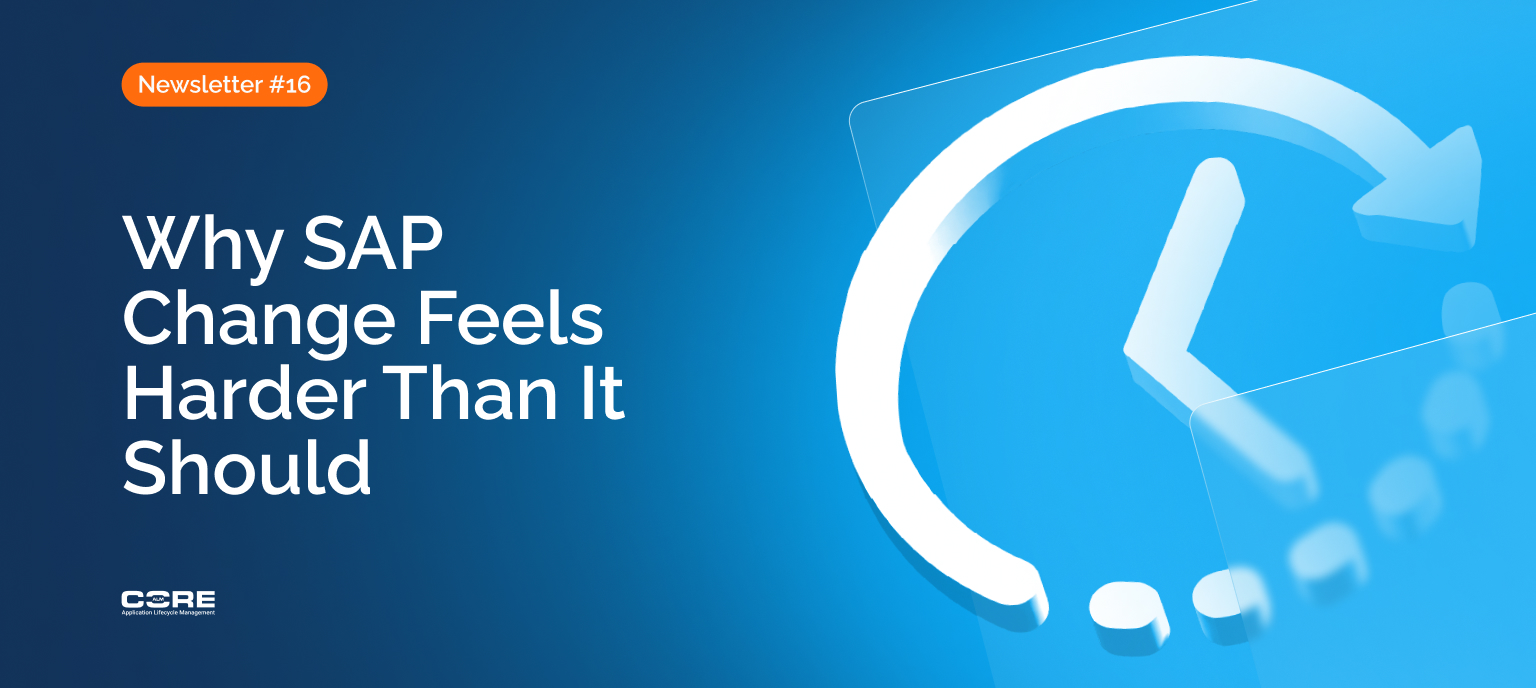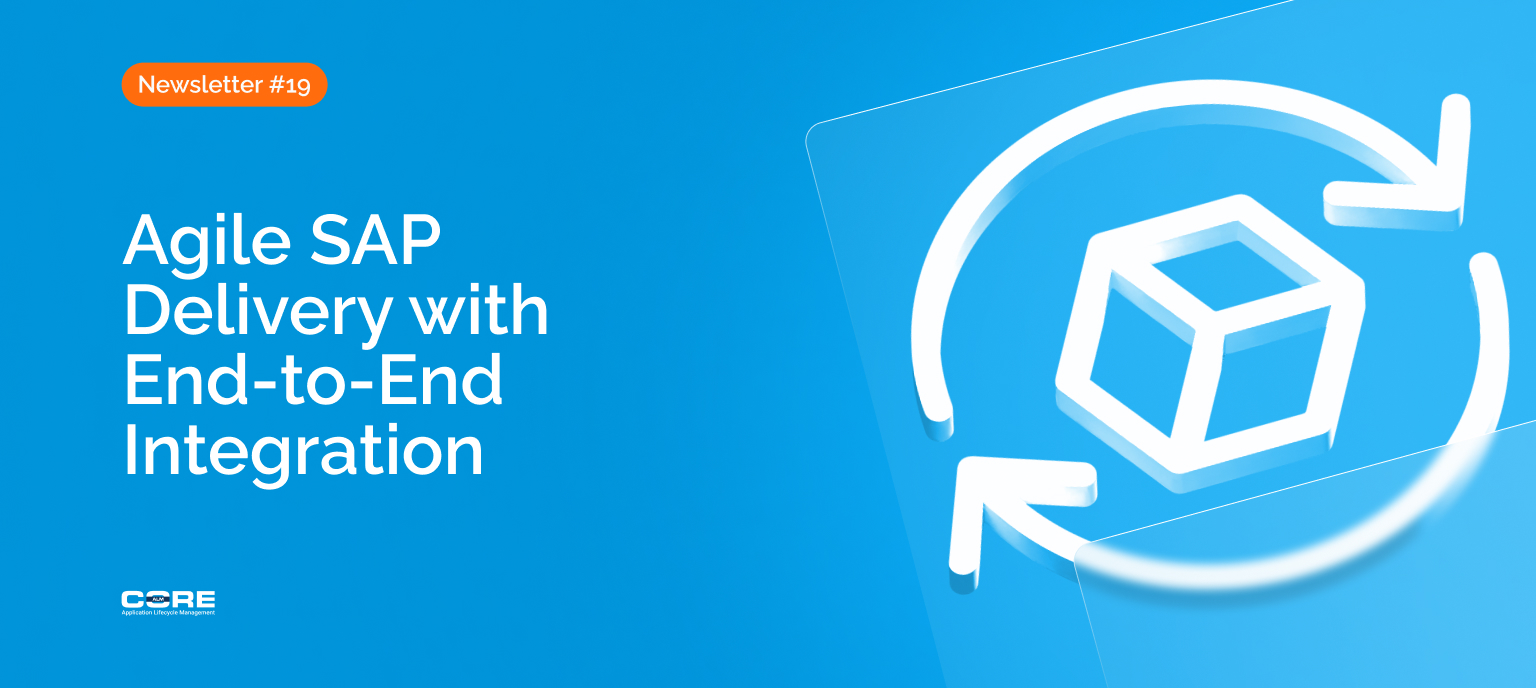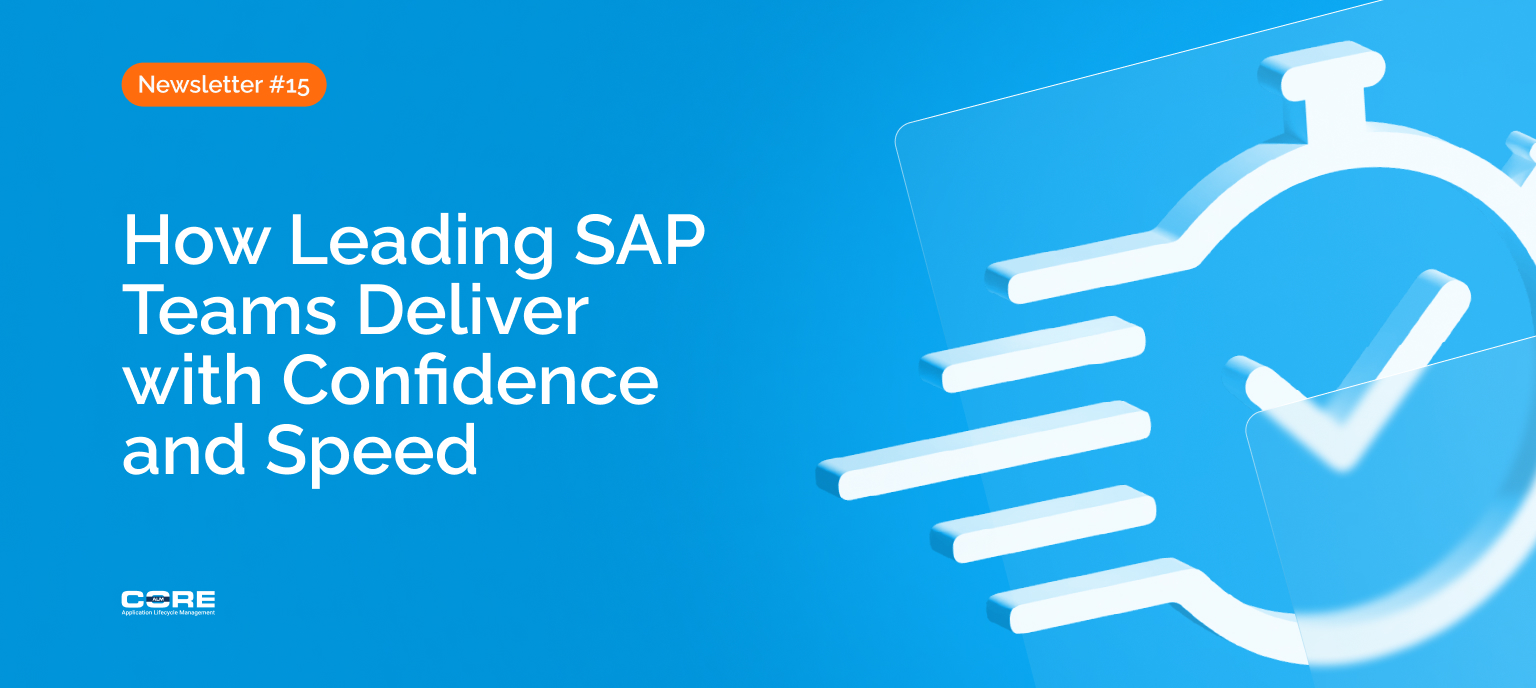Introduction
Governance should enable safe change, not make every step feel like a hurdle.
Governance is meant to protect the business. In SAP programs, however, it often feels like an obstacle course. Teams face layers of approvals, manual workflows, and disconnected tools. These steps slow delivery without improving safety. The result is frustration on both sides: IT experiences governance as red tape, while the business sees it as a hurdle to bypass.
The pressure to fix this has never been higher. Clean core adoption is making SAP landscapes more complex, with S/4HANA integrated to cloud-based applications and side-by-side extensions in BTP. Approvals are often collected separately for SAP and non-SAP applications, and audit evidence has to be stitched together manually. When this happens at scale, risks slip through and audit trails break down, leaving leadership with neither speed nor confidence.
Today, business leaders are demanding faster delivery in an age where AI is reshaping expectations. If governance does not adapt, it becomes both the bottleneck that slows progress and the weak link that exposes the business to risk.
Governance should enable safe change, not make every step feel like a hurdle.
The Weight of Layered Approvals
More signatures do not always mean more safety.
Traditional SAP governance often requires multiple layers of approval. A simple configuration change may need sign-off from several managers, with the process tracked in emails or spreadsheets. Each step adds time, but rarely adds new insight.
Instead of improving safety, this approach slows delivery and encourages workarounds. Teams look for ways to move routine changes outside the process, while critical changes still get lost in a system that values the number of signatures more than the quality of review.
The cure is to simplify approvals. Governance depth should reflect the risk and business impact of each change. Routine changes should move quickly through lightweight, automated paths, while high-risk changes should receive closer review through structured oversight.
Solution in practice: Risk-based approvals can be built into the delivery tools teams already use. Rules can be configured so low-risk changes move quickly, while sensitive changes trigger the additional checks they require. This approach can be supported with CoreALM’s SAP Transport Management for Jira, Azure DevOps, and ServiceNow. These solutions embed approval workflows directly into those platforms, reducing delays, ensuring consistency, and providing a reliable audit record without extra layers of manual effort.
More signatures do not always mean more safety.
The Drag of Disconnected Tools
Scattered approvals and records create gaps in governance and confidence.
In most organizations, governance data is spread across multiple systems. Requirements are managed in Jira or Azure DevOps. Approvals are exchanged by email or logged in ServiceNow. Changes are tracked in SAP. Incidents are tracked separately. No single system shows the complete picture of who approved what, when, and why.
This disconnection leads to two major issues. Teams often fall back on spreadsheets or side meetings to reconcile information, which adds time and effort. At the same time, audit trails are incomplete, making it difficult to demonstrate compliance with confidence.
The cure is to connect the process. Governance should flow across systems so requirements, approvals, and transports remain linked in one view. Teams should be able to work in their daily tools without re-entering data, and leaders should not have to consolidate evidence manually before every audit.
Solution in practice: The answer is not to add another tool, but to connect the ones already in place. When SAP Cloud ALM is linked with platforms such as Jira or Azure DevOps, approvals, requirements, and transports stay synchronized automatically. Governance becomes clearer, less labor-intensive, and easier to sustain. This can be achieved with CoreALM’s connectors for Jira and Azure DevOps, which keep requirements, user stories, tasks, and approvals in sync with SAP Cloud ALM. These integrations provide a complete governance record and enterprise-grade visibility while allowing teams to continue working in the tools they already rely on every day.
Scattered approvals and records create gaps in governance and confidence.
Conclusion: Lighter and Safer at the Same Time
SAP change feels harder than it should because governance has become heavy and disconnected. Layers of approval slow delivery without improving safety, and scattered tools force teams into manual reconciliation.
The way forward is clear. Approvals must be simplified so the level of oversight matches the risk of the change, and governance must flow across tools so requirements, approvals, and transports remain connected in one view. These steps make governance both lighter and more reliable, which is exactly what clean core adoption and modular SAP landscapes demand today.
CoreALM helps organizations put this model into practice through its transport management solutions and Cloud ALM connectors. These integrations embed risk-based approvals and automated traceability into the platforms teams already use, reducing effort while strengthening control.
Governance should not be the obstacle that slows change or the gap that exposes the business to risk. With the right approach, it becomes the foundation for faster, safer SAP delivery.




